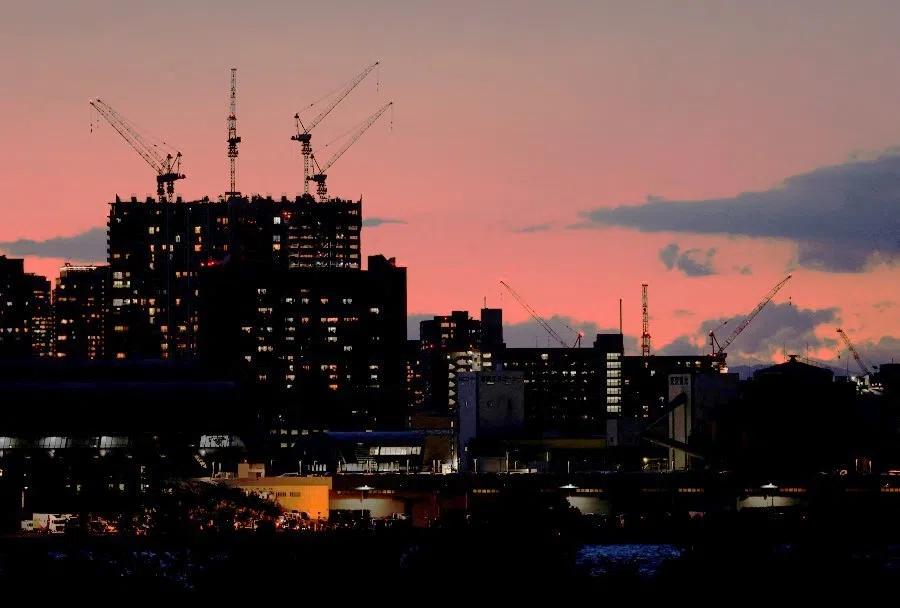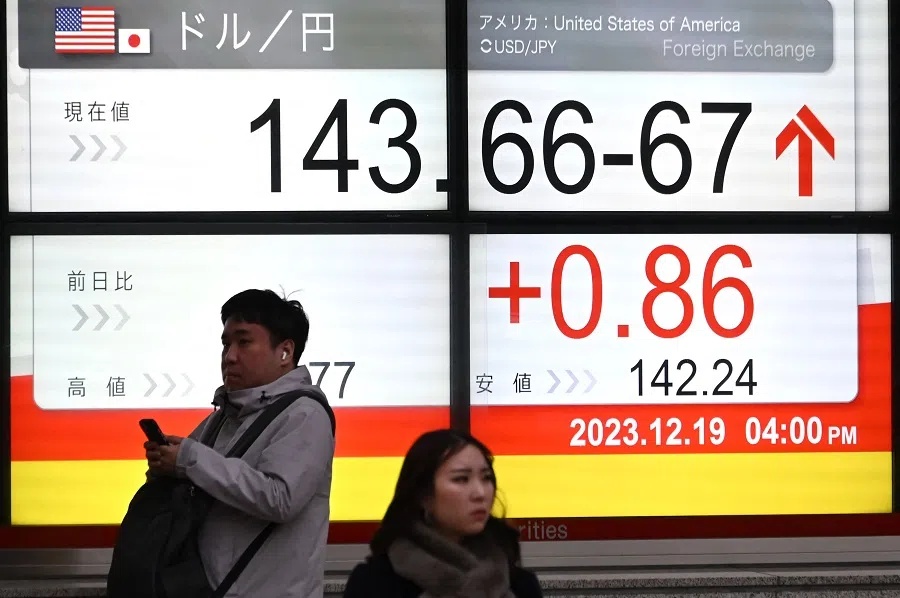China may find cure for stagflation by studying Japan's experience
According to a report by Morgan Stanley released in August, China is facing the triple challenge of mounting debt, an ageing workforce and deflation, raising concern that the country is heading for a fate similar to Japan's in the 1990s. Could Japan's experience offer lessons to Chinese policymakers about how to battle prolonged stagnation?

(By Caixin journalists Wang Liwei, Wang Shiyu and Denise Jia)
Amid strong wage growth and rising prices, Japan is finally emerging from the quagmire of almost three decades of deflation. As China faces similar challenges that its neighbour did 30 years ago, Japan's experience may offer lessons to Chinese policymakers about how to battle prolonged stagnation.
Japan, the world's third largest economy, has suffered from sluggish economic growth and recession since the early 1990s, yet it has maintained its status as a highly developed economy, avoiding the middle-income trap. The country has maintained fiscal sustainability, social stability and welfare levels, all while dealing with an ageing population. Where potential lessons may lay are in the answer to the question of whether Japan could have avoided years of zero growth had it pursued different monetary policies or adjusted its policies sooner.
China, the world's second largest economy, is facing the triple challenge of mounting debt, an ageing workforce and deflation, according to a report by Morgan Stanley released in August, raising concern that the country is heading for a fate similar to Japan's in the 1990s. Analysts at the US investment bank say China can steer clear of such a debt-deflation spiral if policymakers act quickly and decisively.
To do so, China must resist the head-in-the-sand ostrich mentality that prevented Japan from identifying its crisis sooner, and avoid the hesitation and repeated wavering in easing monetary policy, said Xing Yuqing, an economics professor the National Graduate Institute for Policy Studies in Tokyo.
Trying to deflate speculation and keep inflation in check, the Bank of Japan sharply raised rates in late 1989, bursting the bubble and sending Japanese stocks crashing.

Japan was too slow in responding to its plunge into stagflation, according to Tokuchi Tatsuhito, a research fellow at Tsinghua University's Center for Industrial Development and Environmental Governance. The economy's descent could have been reversed in two or three years had it not been for institutional, legal and cultural obstacles that delayed taking action, he told Caixin.
Japan's asset bubble
After years of record post-war economic growth, with monetary easing continuing throughout the second half of the 1980s, Japan created an economic miracle with income per capital exceeding that of most developed countries by 1990. The Japanese stock market reached an all-time high at the end of 1989, while commercial land prices tripled from 1985 to 1991 and residential property nearly doubled.
Trying to deflate speculation and keep inflation in check, the Bank of Japan sharply raised rates in late 1989, bursting the bubble and sending Japanese stocks crashing. By August 1990, the Nikkei stock index lost half its value after five interest hikes pushed the discount rate from 2.5% in April 1989 to 6% in August 1990.
Property loans were also tightened. In March 1990, the Ministry of Finance imposed restrictions on property lending and required banks to report the status of loans to real estate, construction and nonbank borrowers. The loan limits were similar to what China implemented in 2020, a former finance ministry official told Caixin.
By late 1991, property prices began to fall. By 2004, land prices dropped to one-eighth of their peak. The policy switch won initial approval from the public because home prices were unaffordable for many would-be buyers. At the time, many people viewed the decline in property prices as positive, according to The Japanese Economy by Takatoshi Ito, a professor of international and public affairs at Columbia University in New York, and Takeo Hoshi, an economics professor at the University of Tokyo.

Japan's average annual growth through the 1990s, at 1.5%, lagged the expansion of economies around the world and continued to was slower than global growth and the decline continued for more than a decade, giving rise to the term "lost decade", which then extended to "the lost 20 years and 30 years".
In hindsight, the central bank did not adequately consider the eventual negative impact of bursting the bubble on financial stability, and may have erred by continuing its policy of tightening after the bubble had begun to burst, Ito and Hoshi wrote.
Unlike the crash of the stock market, property prices fell more gradually in the 1990s. When the real estate slump and economic deceleration was aggravated by the enforcement in January 1992 of the land value tax, criticism of the government's policies began to arise, the former finance ministry official said. Even though the tax was later shelved, public dissatisfaction with the government and banks continued to grow, the former official said.
Bad loans
The burst of the asset prices left overly leveraged Japanese banks and insurance companies with a load of bad loans. By 1995, it was clear to many economists and financial experts that the most serious problem facing Japan was bad loans in the banking sector. At the time, banks could try to cover their bad loans, but in March 1993, lenders were required to make disclosures.
The government had at first estimated a size of 30 trillion yen (US$211 billion) of bad loans, and had expected it would take at most five years for large banks to absorb the losses, according to the former finance ministry official. When banks were forced to slash about 100 trillion yen, or US$885 billion at the time, of bad loans while taking drastic measures to reduce risk, they found the size was way more than their capability to absorb, the former official said.
The turning point came after Heizo Takenaka was appointed minister of state for financial services, replacing Hakuo Yanagisawa, who has been opposed to infusing public funds into banks.

The 1997 Asian financial crisis made matters worse for Japan. November 1997 was the darkest month in Japan's post-war financial history, as Sanyo Securities, a mid-sized securities firm, and Hokkaido Takushoku Bank, the smallest of the country's 20 largest banks, went bust under the weight of bad loans, followed by the collapse of Yamaichi Securities, which had been one of the four major Japan's brokerages with many major Japanese corporate clients.
In 1998, two important financial regulatory reform laws - the Financial Reconstruction Act and the Rapid Recapitalisation Act - were passed in Japan, allowing the government to use 30 trillion yen of public funds to protect depositors of failed banks and provide assistance for troubled banks.
The turning point came after Heizo Takenaka was appointed minister of state for financial services, replacing Hakuo Yanagisawa, who has been opposed to infusing public funds into banks. Takenaka pushed the Program for Financial Revival, known as the Takenaka Plan, which required a more rigorous assessment of bank assets, an increase in bank capital and stronger supervision. As a result, Japanese banks cleaned up about 90 trillion yen worth of non-performing assets. That is equivalent to 90% of all Japanese banks' loans from 1985 to 1989, according to Xing at the National Graduate Institute for Policy Studies.
But it took the government 15 years to tackle the bad loans. If the finance ministry had dealt more decisively with the bad loan problem in the mid-1990s, Japan would not have experienced a financial crisis of this magnitude, Ito said.
Over the past three decades, there have been several glimmers of light in the Japan's economy, but the signs of recovery have been interrupted by premature tightening of macro policies, many scholars believe.

As a result of a massive fiscal stimulus and a low interest rate of 0.5% since September 1995, Japan's economy grew by 3% in 1996, the highest rate since the peak of the bubble burst. But a series of fiscal policies of 1997, which included an increase in the consumption tax and the phasing out of income tax cuts that had been in place since 1995, pushed the economy back into recession in mid-1997. The central bank cut the interest rate to zero in February 1999. But since then, every time the economy showed signs of recovering, the central bank resumed tightening.
Government spending
Japanese government's efforts to address weak demand offers valuable lessons to China as households in both countries have a high savings rate and are unwilling to spend.
"If households and businesses don't spend, the government should spend on your behalf," said Xing at the National Graduate Institute for Policy Studies.
After the bubble burst, Japanese government spending increased rapidly to stimulate growth, but much of it was invested in inefficient infrastructure, such as building three bridges within 1,000 metres, Tokuchi said. For example, highways were constructed in the northeast region, but very few cars run on them. Also, many galleries, museums and music halls were built in remote rural areas, which are costly to maintain, Tokuchi said.
Like China today, Japan's private sector then had abundant savings and insufficient investment. Increased government debt would promote output growth and employment, without leading to inflation, excessive demand or threatening the government's credit, said Zhang Bin, deputy director at the Institute of World Economics and Politics at the Chinese Academy of Social Sciences.
In response to a crisis, monetary and fiscal and other macro policies should cooperate with each other, and the government should not launch policies little by little, like squeezing toothpaste... - Tokuchi Tatsuhito, Research Fellow, Tsinghua University's Center for Industrial Development and Environmental Governance

By the end of 2022, Japan's government debt rose to 228% of GDP. But investors are not worried about the government's ability to pay its debt. Japanese yen is still favored by investors and its government bonds are also very safe investment, Zhang said.
China's debt has also risen sharply, from 270% of GDP in the last quarter of 2019 to 300% of GDP as of the first quarter of 2023.
"Of course, the ideal way would be for the private sector, not the government, to invest more, but the reality is that we may not be able to do that in the short term, and we need more government spending," Zhang said. Zhang Bin pointed out that the goal of government borrowing to increase spending is to improve the cash flow and profitability of the private sector, help the private sector have a better balance sheet, and be able to further increase investment and restore the momentum of economic growth.
China's fiscal expansion should focus on spending more effectively in areas such as education, healthcare, elderly care and benefits for migrant workers, so as to alleviate urban and rural residents' worry about the future and encourage a recovery in consumption and investment, Xing said.
Compared with Japan, China has an advantage of efficiency in its decision-making process, Tokuchi said. But the key to effective policy is to get the direction right, he said. "The lesson China should learn is that when it comes to bailout, it must be decisive," he said. In response to a crisis, monetary and fiscal and other macro policies should cooperate with each other, and the government should not launch policies little by little, like squeezing toothpaste, otherwise it may lead to lack of confidence and cause problems to worsen, he said.
Chen Lixiong contributed to this report.
This article was first published by Caixin Global as "Cover Story: China May Find Cure for Stagflation by Studying Japan's Experience". Caixin Global is one of the most respected sources for macroeconomic, financial and business news and information about China.

![[Big read] Paying for pleasure: Chinese women indulge in handsome male hosts](https://cassette.sphdigital.com.sg/image/thinkchina/c2cf352c4d2ed7e9531e3525a2bd965a52dc4e85ccc026bc16515baab02389ab)

![[Big read] How UOB’s Wee Ee Cheong masters the long game](https://cassette.sphdigital.com.sg/image/thinkchina/1da0b19a41e4358790304b9f3e83f9596de84096a490ca05b36f58134ae9e8f1)

